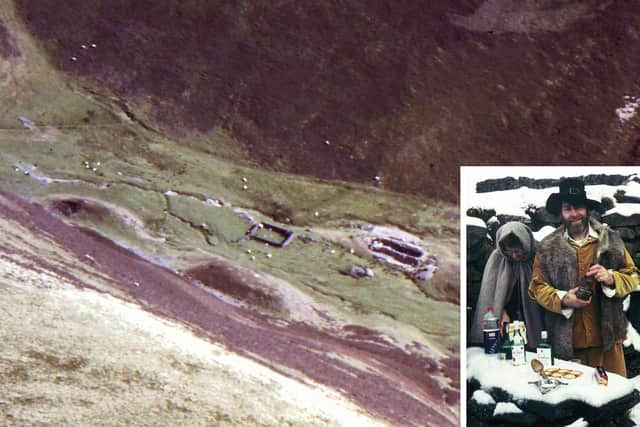Bordering warfare on debatable lands
and live on Freeview channel 276
A driving force behind this was the late Tam Ward, without whose enthusiasm and drive much would remain unknown about the history of the Bastle House.
The house takes its name from the French word Bastille, meaning ‘fortified tower house’. It is a square tower with a vaulted basement. They were chiefly constructed in the late 16th century in an area known as the Debatable Lands covering the English and Scottish Borders.
Advertisement
Hide AdAdvertisement
Hide AdThere were various factors which led to their construction, one being the animosity between England and Scotland. However, the principal reason were feuds between Border families or between Border families and the Governments of both England and Scotland.


Quite often Scottish families would support friends in Northumberland rather than the Scottish Government. These fights did not cease with the Union of the Crowns in 1603 and we even see Bastle Houses being built in Clydesdale up to 1610 so it was some time before Border warfare settled down.
In Clydesdale most of the Bastle Houses are located in the remote glens of the Southern Uplands with the occasional one being found further north. The most northerly are Nemphlar and Scabgill near Braehead. Both these areas have remains of the typical Bastle House.
The best impression of what a Bastle House was like can be gained by walking up to Glenochar which is located on the road running from Elvanfot to Dumfriesshire. The route is signposted.
Advertisement
Hide AdAdvertisement
Hide AdGlenochar is important as it is a ‘ferm toun’ with the main building being the Bastle House itself. The bottom part of the vaulted basement still remains. In times of danger the best sheep and cows would be brought in for protection. To protect all the animals would be impossible as the proprietor of Glenochar would have between 120 and 150 sheep.
Normally the cows and horses would be in stables surrounding the Bastle. These were identified by the drain running centrally through the building to remove the effluent. The other low buildings surrounding the Bastle would be for the servants who would work the lazy beds (kitchen garden), look after the animals and work iron to provide tools and horseshoes.
Life was not as grim as one might imagine, especially as the economy of Southern Scotland improved. This process began in the 17th century; coin finds included a Daler of Rudolf II struck in Cologne in 1610 and a Dutch Rijksdaler about 1606. These crown size coins may have come to Glenochar through one of the people there fighting as a mercenary in the Thirty Years War (1618-1648). Many Scots at this time volunteered to fight for the Protestant cause.
People were still living at Glenochar and buying wine, port and fine china but ultimately all this came to an end. The returns from communities like Glenochar fell partially due to the effects of climate change as well as the availability of industrial jobs in coal mining and manufacturing industries from the 1760s onwards.